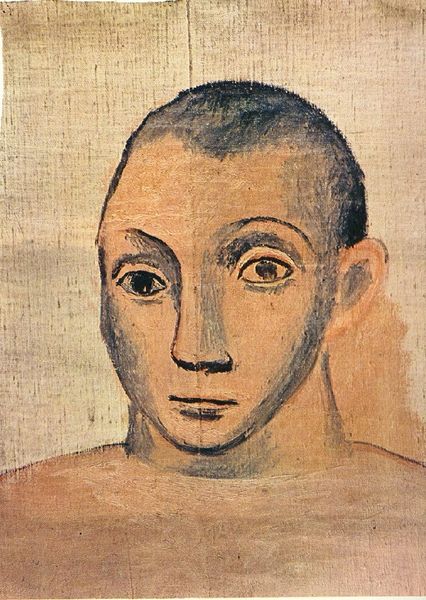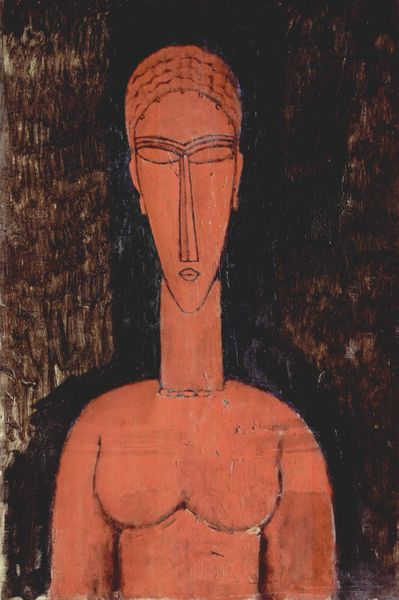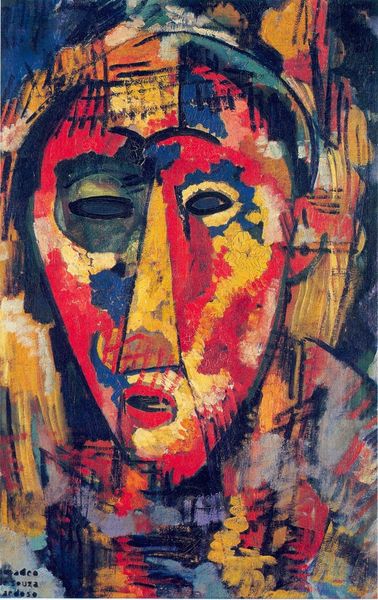
painting, oil-paint, impasto
#
portrait
#
cubism
#
fauvism
#
painting
#
oil-paint
#
impasto
#
expressionism
#
abstraction
Dimensions: 18 x 14 cm
Copyright: Public domain US
Editor: This is "Head of a Man" by Pablo Picasso, painted in 1907. It’s an oil painting and the thick brushstrokes really stand out. I'm immediately drawn to the face, or rather, the deconstructed face. It’s…intense. What’s your interpretation? Curator: A relevant question. Immediately, my eye is taken by the way Picasso uses form and color. Notice how he renders the facial features as separate, almost geometric, entities. The heavy impasto is crucial to the painting's texture, almost sculptural in effect, and the palette is very striking: black hair contrasted against reddish and ochre details and framing a cream tone used as background and ground for the face itself. Editor: So, it’s less about portraying a realistic likeness, and more about...exploring shapes and texture? Curator: Precisely. Observe the symmetry but note the subtle misalignments within each feature. How the brushwork articulates with each plane creates tension. There is almost a tension between symmetry and asymmetry, between geometric planes and curvilinear design choices. Consider the strategic use of color – where it intensifies and where it is omitted. How does that impact the piece? Editor: I see what you mean about the symmetry. It’s like he's playing with our expectations of how a face should look. The eyes and eyebrows and all...almost as if one element of the design and layout could slide right off the surface! Curator: Exactly. Focus on the relationships, not on symbolic meaning, to see how the abstract elements play into our perception of form and structure. How do these relationships establish an almost expressionistic dimension in a Cubist format? Editor: Okay, I think I'm starting to appreciate it more. It’s a fascinating study of form, color, and line! Curator: Agreed. And understanding this particular structural approach reveals layers of complexity beneath the surface.
Comments
No comments
Be the first to comment and join the conversation on the ultimate creative platform.













